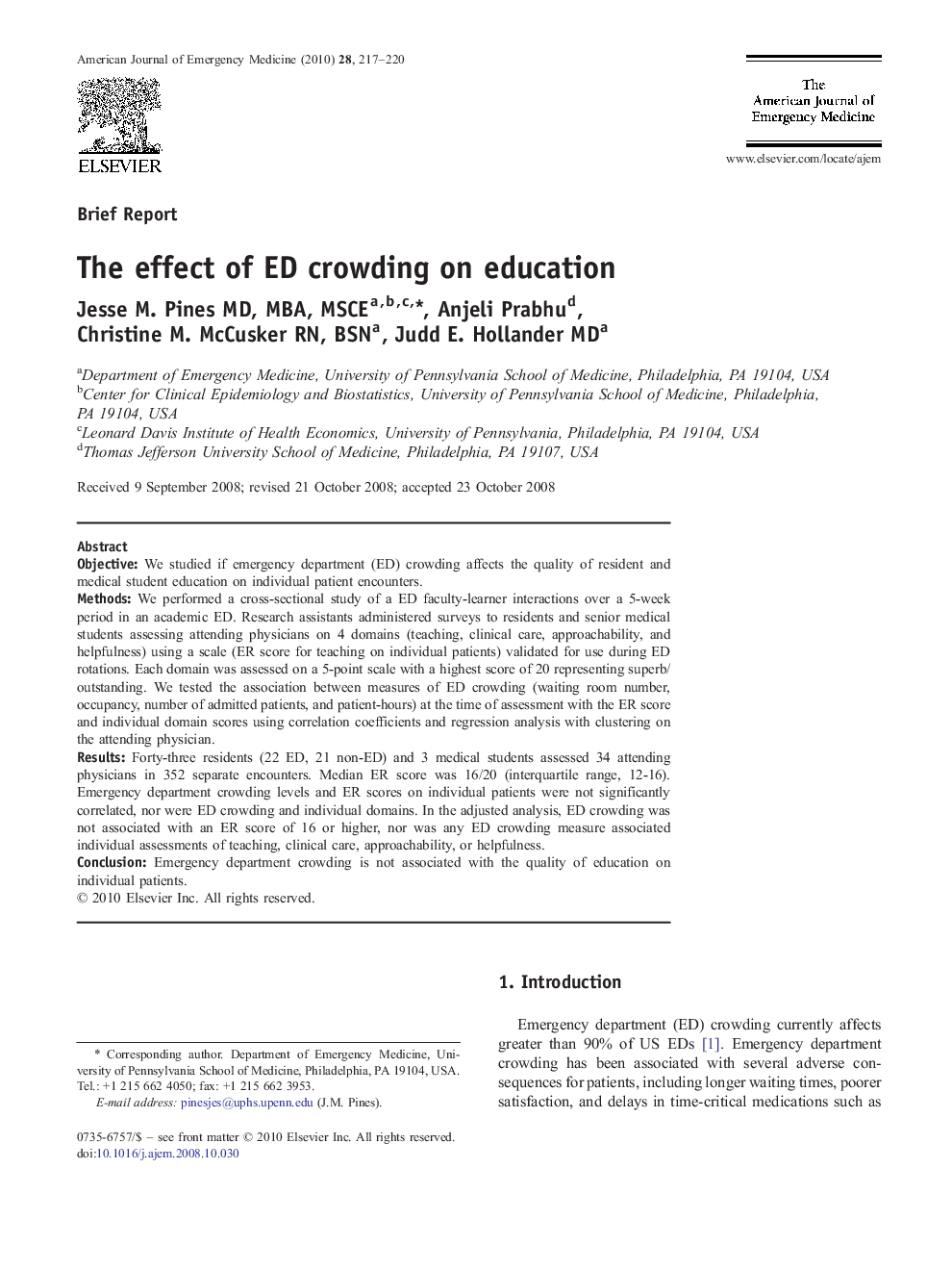| کد مقاله | کد نشریه | سال انتشار | مقاله انگلیسی | نسخه تمام متن |
|---|---|---|---|---|
| 3226926 | 1588160 | 2010 | 4 صفحه PDF | دانلود رایگان |

ObjectiveWe studied if emergency department (ED) crowding affects the quality of resident and medical student education on individual patient encounters.MethodsWe performed a cross-sectional study of a ED faculty-learner interactions over a 5-week period in an academic ED. Research assistants administered surveys to residents and senior medical students assessing attending physicians on 4 domains (teaching, clinical care, approachability, and helpfulness) using a scale (ER score for teaching on individual patients) validated for use during ED rotations. Each domain was assessed on a 5-point scale with a highest score of 20 representing superb/outstanding. We tested the association between measures of ED crowding (waiting room number, occupancy, number of admitted patients, and patient-hours) at the time of assessment with the ER score and individual domain scores using correlation coefficients and regression analysis with clustering on the attending physician.ResultsForty-three residents (22 ED, 21 non-ED) and 3 medical students assessed 34 attending physicians in 352 separate encounters. Median ER score was 16/20 (interquartile range, 12-16). Emergency department crowding levels and ER scores on individual patients were not significantly correlated, nor were ED crowding and individual domains. In the adjusted analysis, ED crowding was not associated with an ER score of 16 or higher, nor was any ED crowding measure associated individual assessments of teaching, clinical care, approachability, or helpfulness.ConclusionEmergency department crowding is not associated with the quality of education on individual patients.
Journal: The American Journal of Emergency Medicine - Volume 28, Issue 2, February 2010, Pages 217–220